The Bark-Shedding Ritual of Eucalyptus Trees
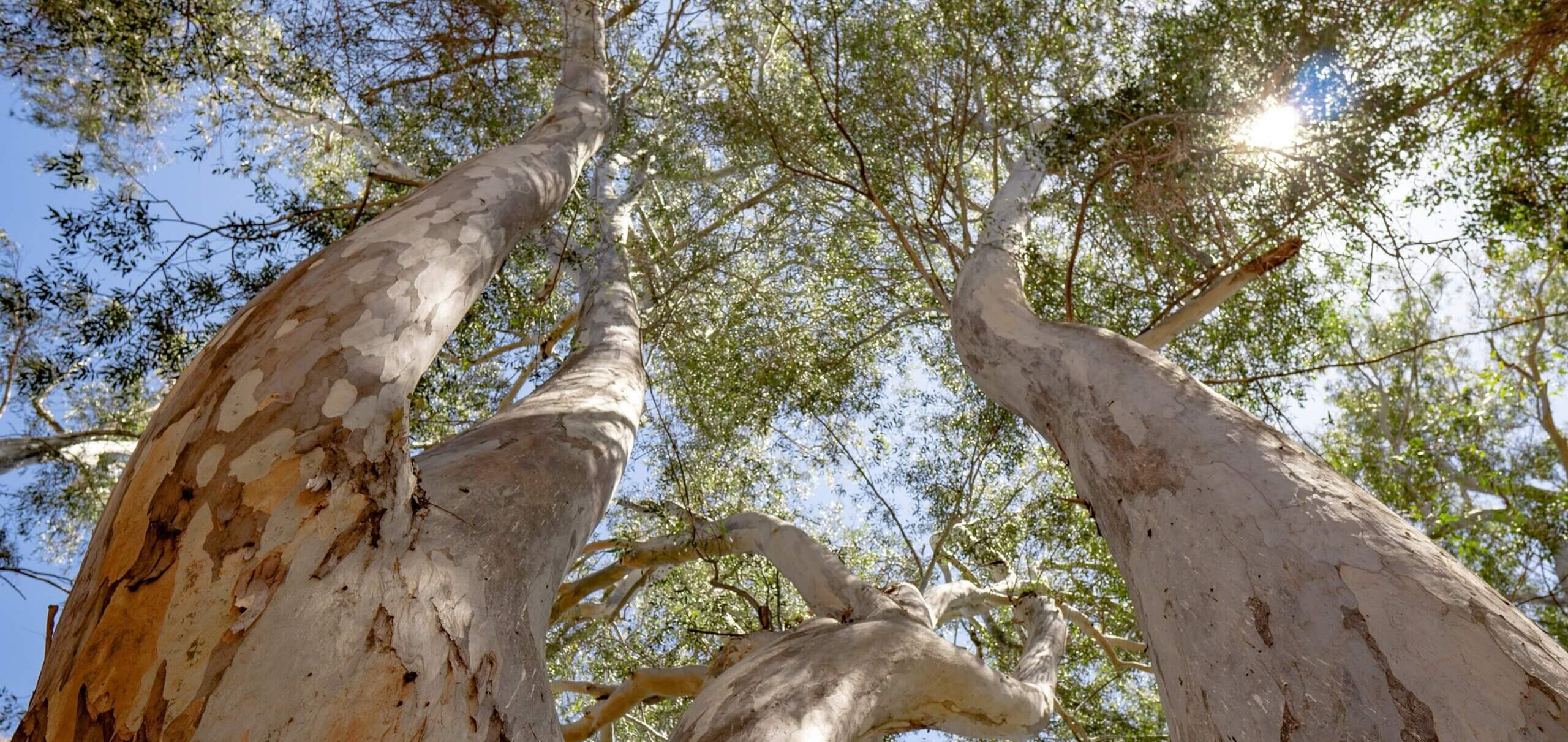
Eucalyptus trees have captured the hearts of botanists, environmentalists, and everyday admirers alike. With their unique features, extraordinary adaptability, and aromatic allure, these majestic giants have become iconic symbols of the Australian landscape.
The Australian Exhibit is the largest exhibit in Boyce Thompson Arboretum. It stretches over approximately 10 acres of sprawling woodland and encompasses 1,280 plantings, many of which date from the mid-1920s.
The exhibit includes the largest and most diverse stand of eucalyptus trees in North America. Our eucalyptus collection holds 93 taxa and was nationally accredited in 2018.
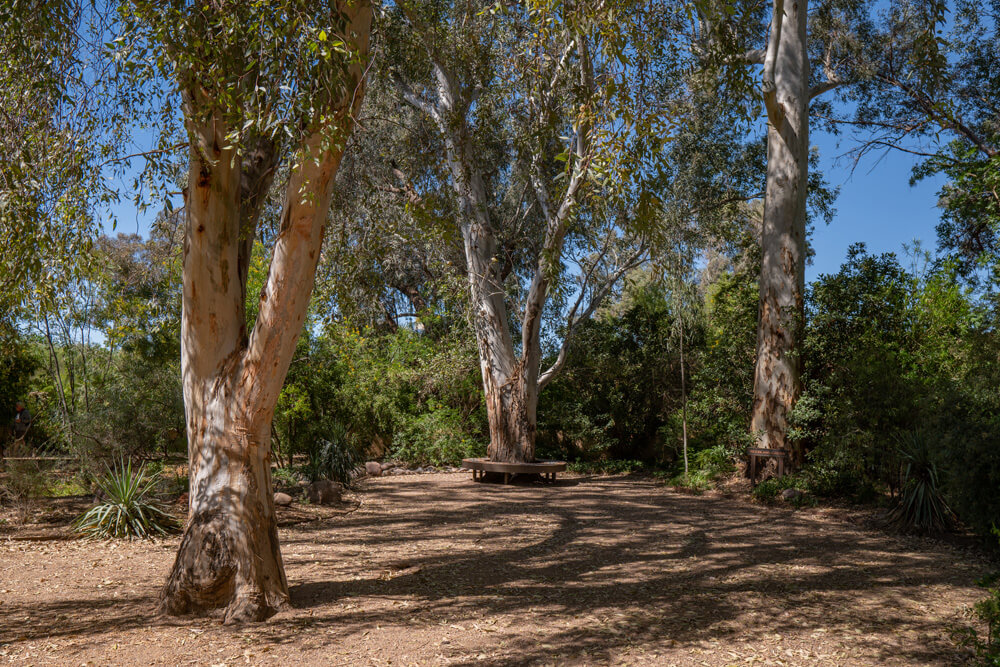
Nature is full of wonders that continue to amaze us with their intricate designs and mysterious processes. Among these marvels are the iconic eucalyptus trees, which captivate the world with their striking appearance and fascinating behaviors.
One such enchanting spectacle is their unique ability to shed their bark. This reveals an array of colors and patterns that evokes a sense of wonder and awe. Let’s delve into the reasons behind this natural phenomenon.
Why do Eucalyptus Trees Shed their Bark?
Although the reasons for the bark-shedding ritual of eucalyptus trees is not known for certain, research has provided a few ideas as to why. Eucalyptus trees may shed their bark as a natural part of their growth and survival strategy. The shedding of bark is known as exfoliation, and it is a distinctive characteristic of many eucalypt species.
Here are reasons why eucalyptus trees may shed their bark.
- Growth and renewal
- Adaptation to fire
- Water conservation
- Removing accumulated toxins
- Preventing infestations
Growth and Renewal
Eucalyptus trees are fast-growing. As they grow, their outer bark becomes stretched and strained. Shedding the old, dead bark allows the tree to accommodate its increasing girth and to continue growing. By shedding the outer layers, the tree exposes a fresh, new layer of living bark underneath.
Adaptation to Fire
Eucalyptus species have adapted to survive and even benefit from wildfires. As fire feeds on the flammable bark that is shed at the foot of the trees, eucalyptus trees disperse large clusters of seeds that rely on fire for growth. The seeds possess a protective coating that needs to be burned off for successful germination.
Water Conservation
Eucalyptus trees are well-adapted to thrive in arid and semi-arid environments. The exfoliating bark helps to reduce water loss through transpiration. The outer layers of dead bark act as an insulating and protective layer against evaporation. In the meantime, the fresh, moist inner bark helps the tree retain water.
Removing Accumulated Toxins
Eucalyptus trees are known for producing aromatic oils in their leaves, which have antiseptic and insect-repellent properties. In addition to producing eucalyptus oil to protect itself, these trees also shed their bark for protection. As the bark sheds, it removes oils, resins, and other substances that might be harmful to the tree.
Preventing Infestations
Some eucalyptus species are susceptible to infestations by pests such as the eucalyptus longhorned borers and other beetles. Trees shed bark to remove insects that have burrowed into it, reducing the risk of infestation.
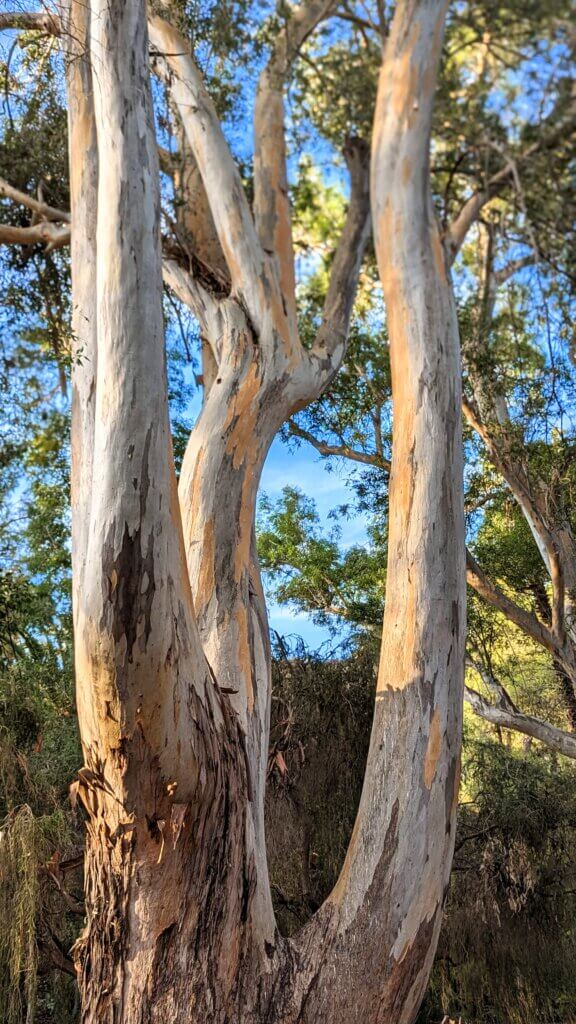
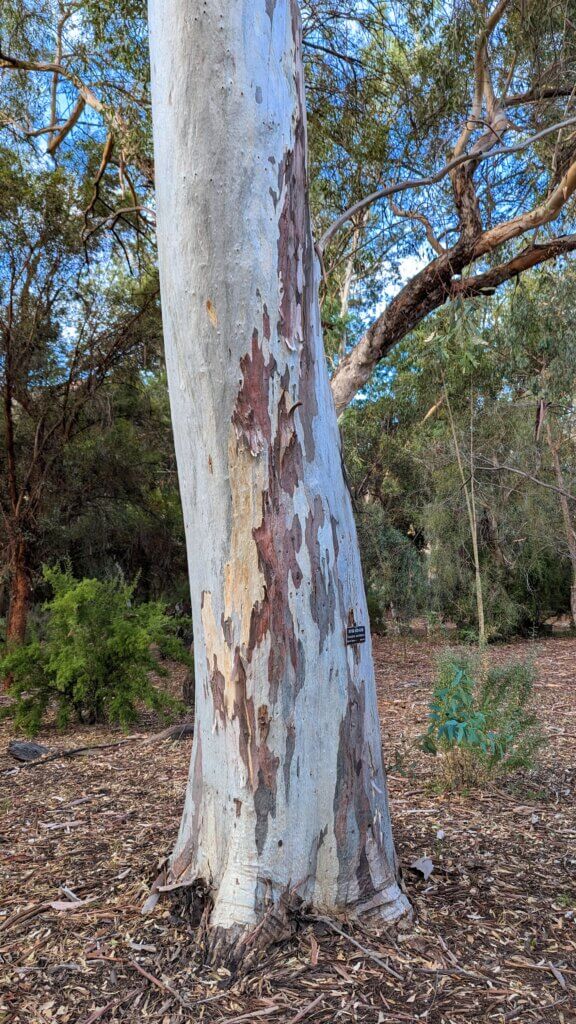
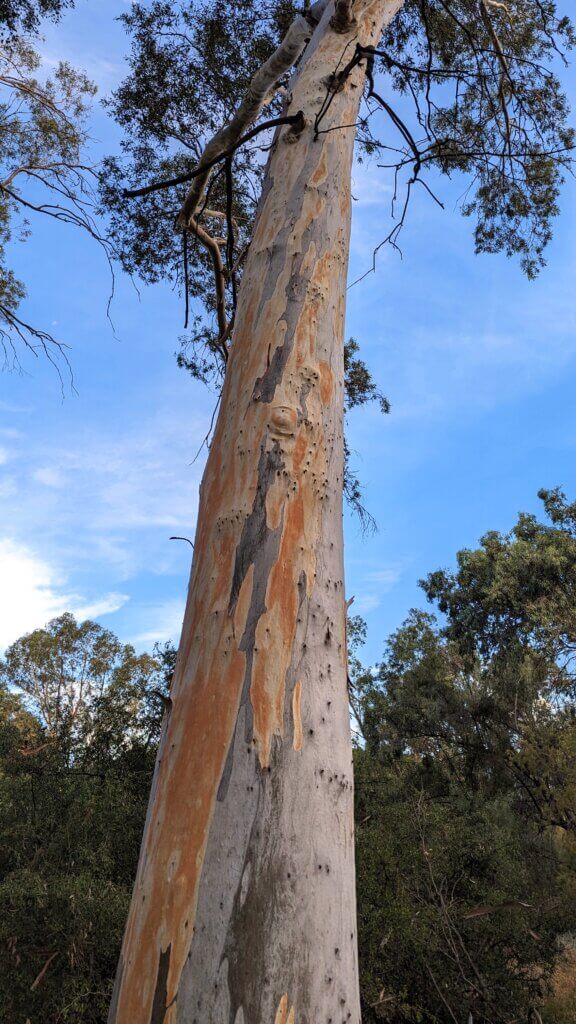
The process of bark shedding in eucalyptus trees is gradual. As eucalyptus trees shed their bark, they unveil a breathtaking array of colors. These colors range from creamy whites and pale grays to vibrant shades of orange, red, and even purple.
The tree’s trunk and branches showcase a vivid mosaic of hues. This visually stunning transformation adds to the tree’s allure and has inspired artists, photographers, and nature enthusiasts alike.
Visit Boyce Thompson Arboretum to explore the fundamental characteristics that make eucalyptus trees stand out in the botanical world. These trees possess undeniable traits that set them apart from other trees in the arboretum. They have a unique ephemeral quality and should be appreciated at their different stages of life year round.
Witness their evergreen leaves that emit a delightful aroma after a heavy rainfall. View their excessive shedding throughout the summer and their revealing bark patterns throughout the fall. See their beautiful blooms and interesting seed pods in the spring. On a breezy day, enjoy the elongated leaves emitting their calming sound in the slightest bit of wind.
Eucalyptus trees remain a testament to nature’s beauty. Let’s cherish and protect these guardians of the land. Remember that their continued existence depends on our conscious efforts to preserve their unique habitats. Respect their place in the delicate tapestry of life on Earth.
